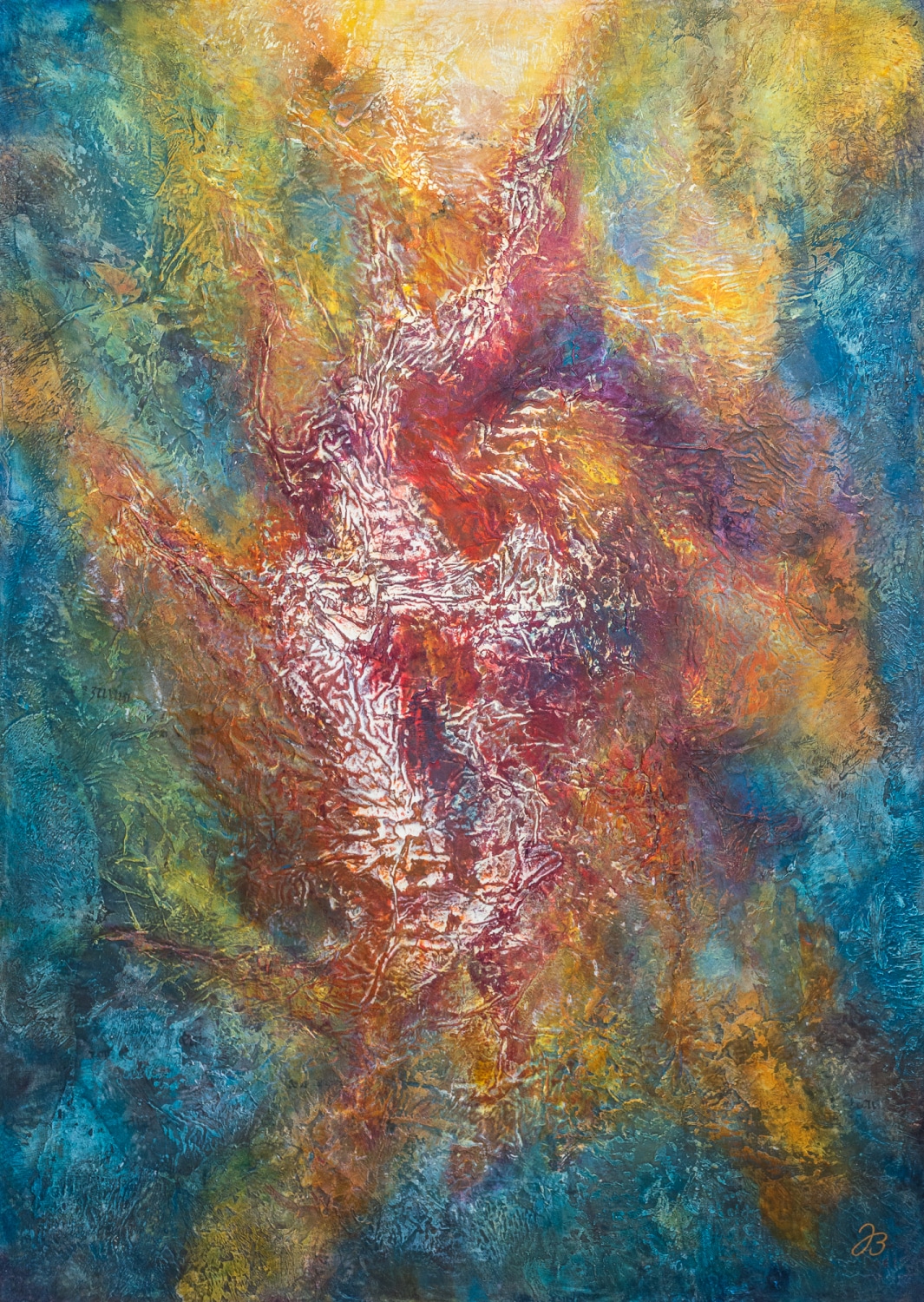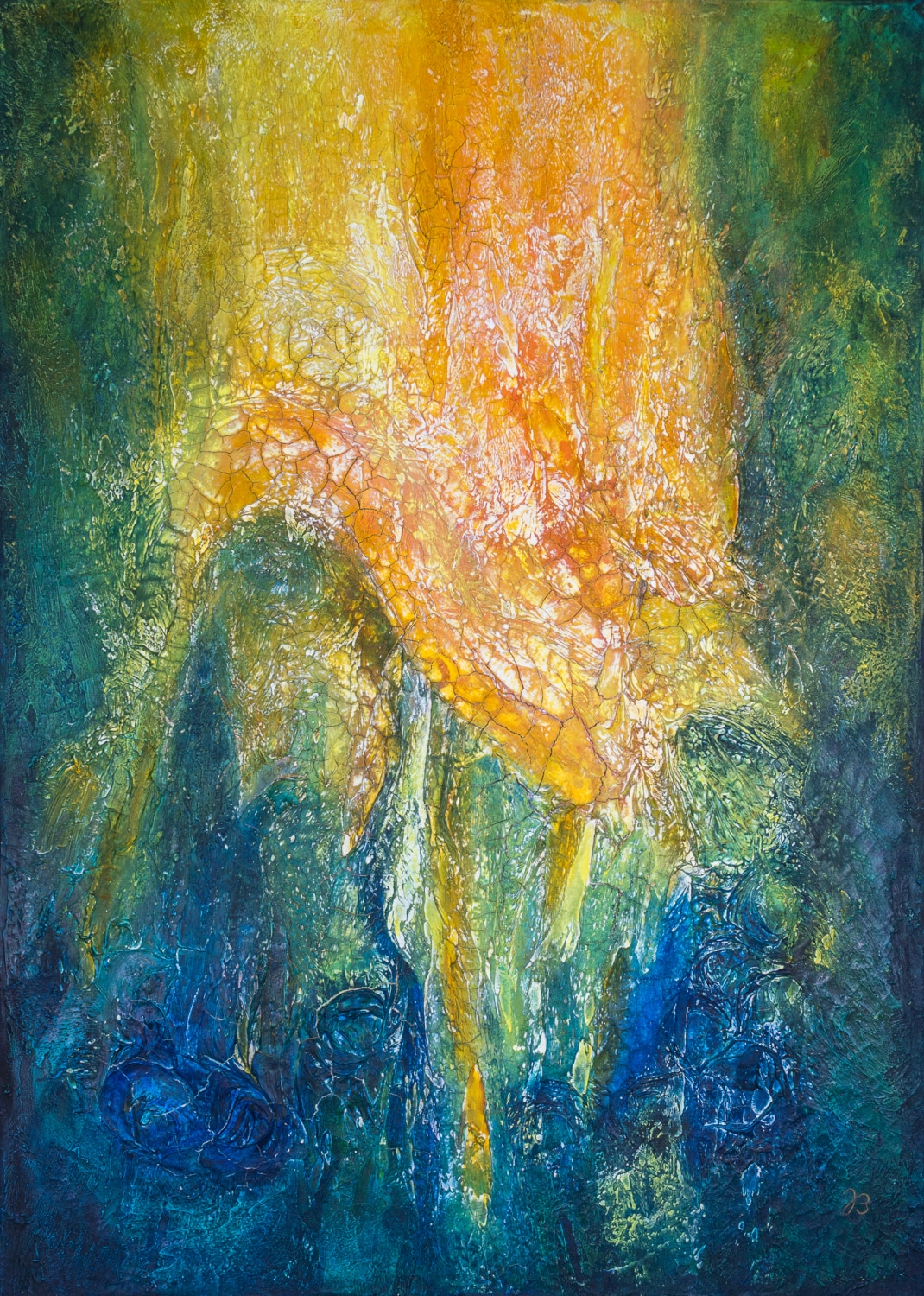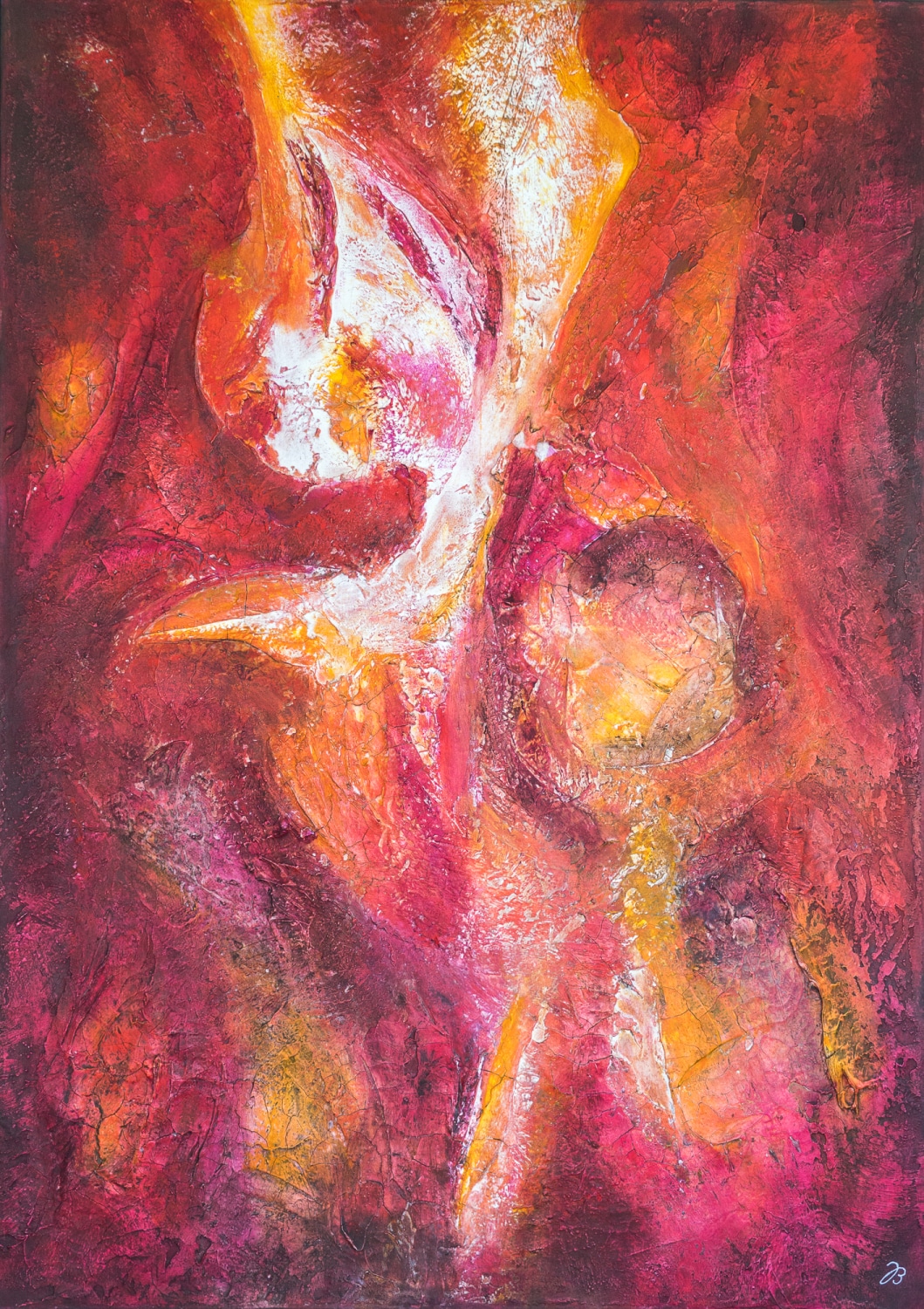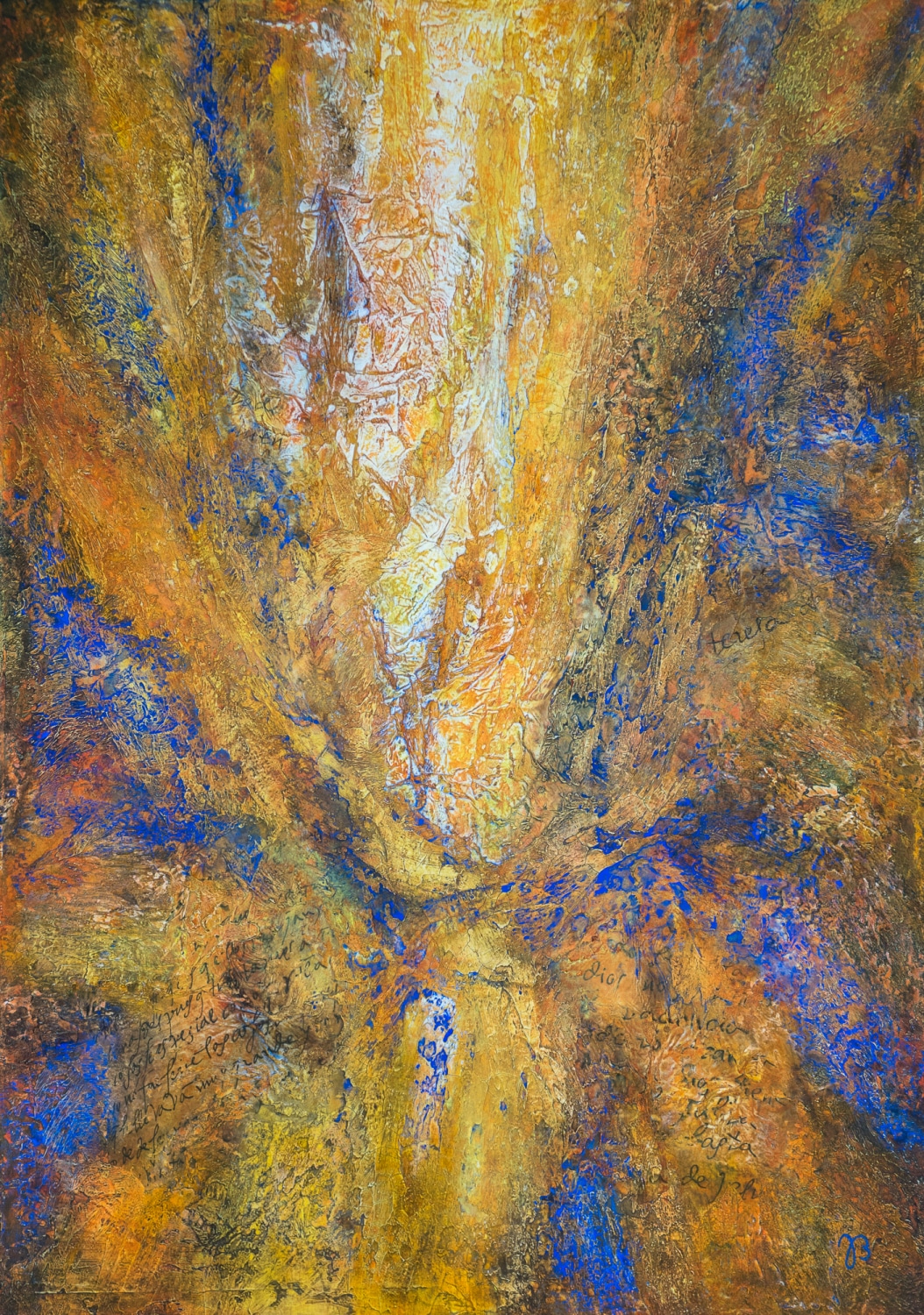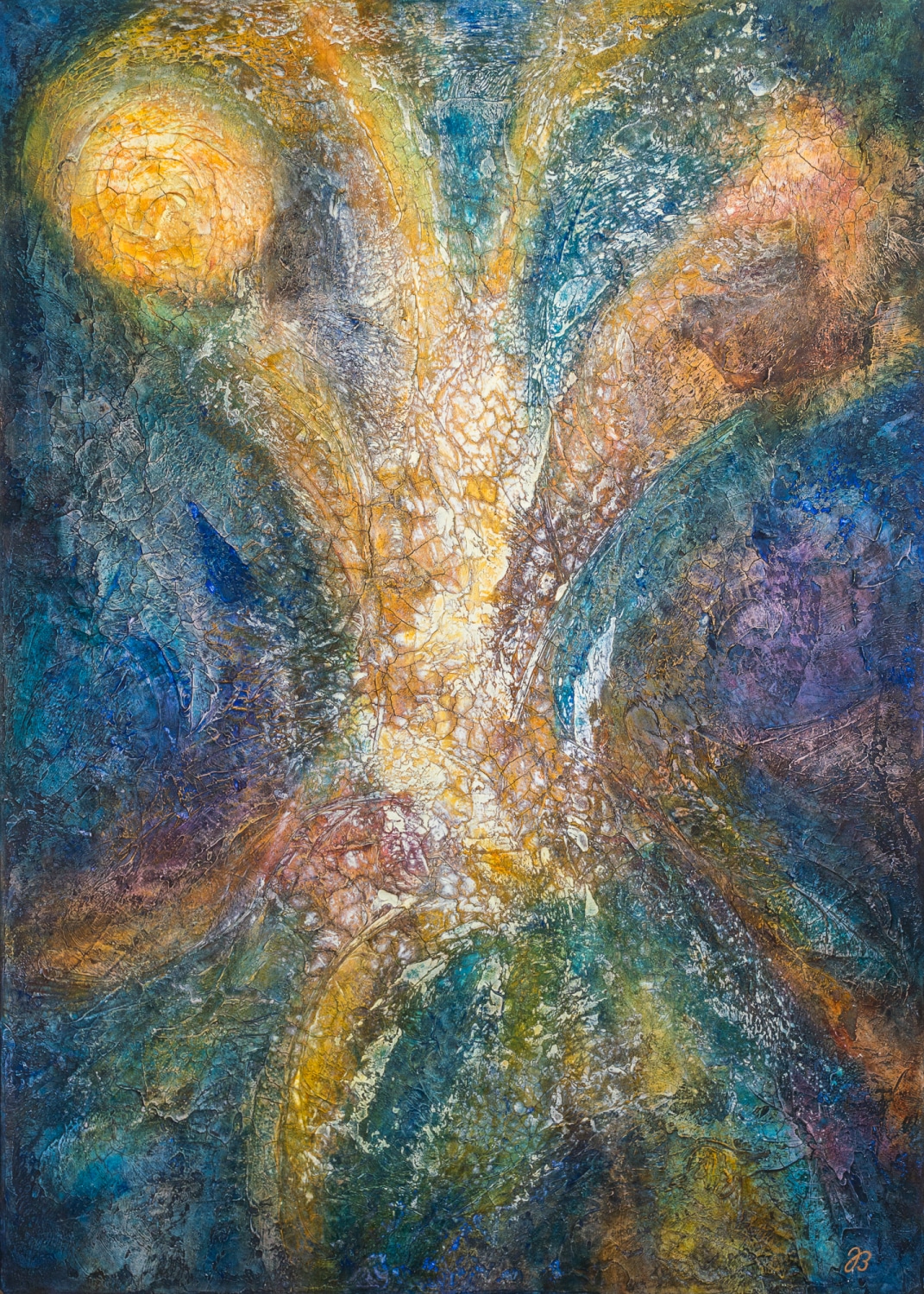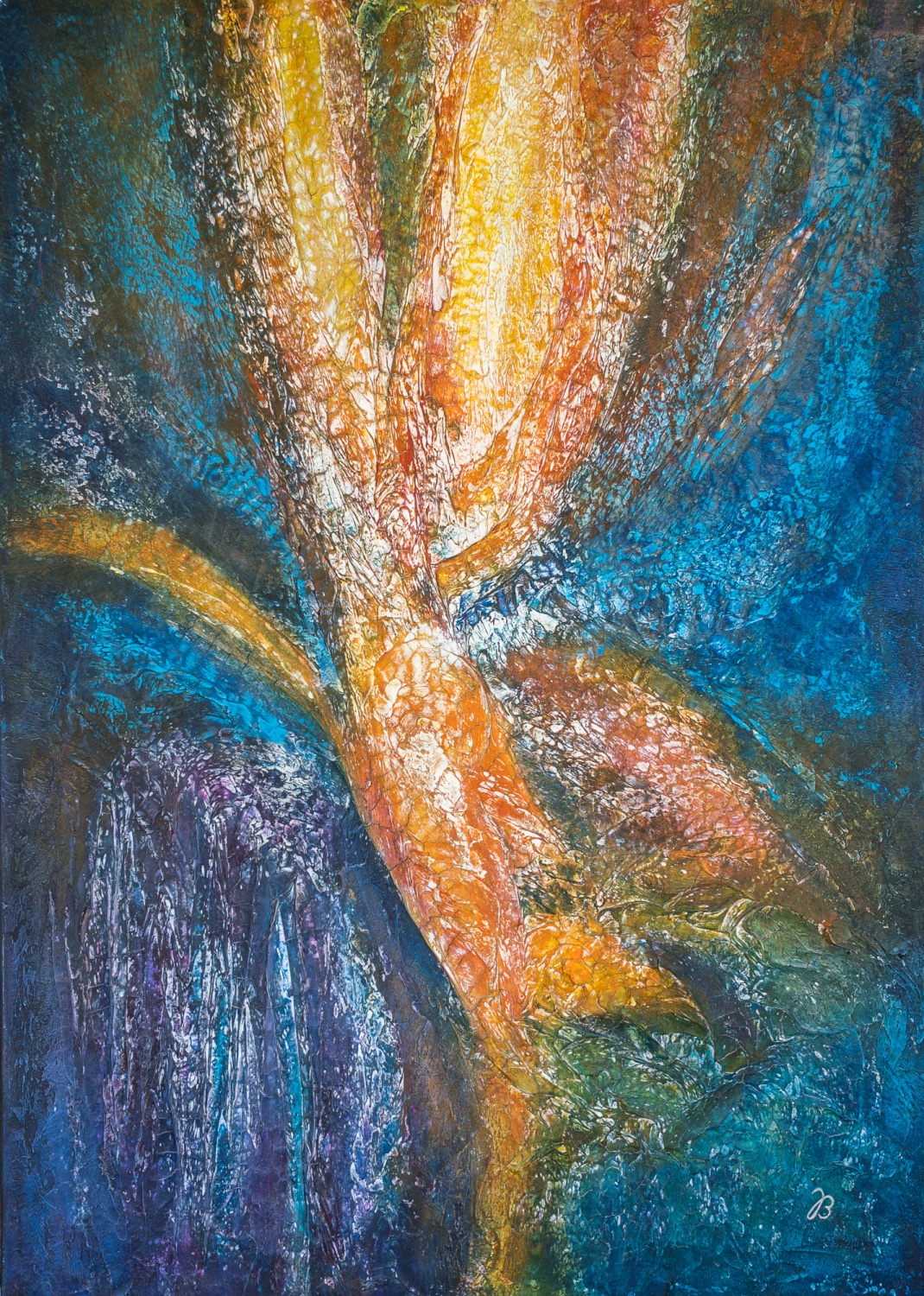Exhibition at the Kollegienkirche Salzburg (2022).
The exhibition in the Kollegienkirche Salzburg on the theme “Giving color to the saints” was something very special. The artist Rudolf Brudl from Straßwalchen and Jutta Blühberger from Strobl have focused intensively on twelve saints in the collegiate church. The two of them painted six paintings each and Jutta Blühberger wrote accompanying texts about the saints.
The Collegiate Church in Salzburg
The Kollegienkirche (Collegiate Church) in Salzburg offers an incomparable ambience for an unusual exhibition of contemporary art.
Built by Fischer von Erlach, the church is largely designed in white, which is the union of all colors and thus a symbol of the divine and perfection. Contrary to Erlach’s original plans, the niches were filled with various figures of saints and altars. With one exception (Judas Thaddeus), they stand above the eye level of the visitors and are painted in dark colors.
The exhibition “Giving color to the saints”.
The exhibition, initiated by Rudolf Brudl, has two goals:
The purpose of the artists’ effort is to bring the lives of these special people closer to the visitor, to make them more colorful and vivid, so to speak. On the one hand, the paintings and texts should help to make these saints, some of whom are little or only superficially known, vivid, so that they meet us as people at eye level. They were all people with faults and weaknesses, but through their relationship with God they experienced and brought about extraordinary things. On the other hand, each of them had special concerns for which they stood up and which are just as relevant today. Even though today’s circumstances are often very different from theirs, there are parallels. Their concerns from centuries past are still relevant in the present, even if the application is different. In dialogue with these saints, we want to challenge ourselves to Christian and social commitment.
The artworks thus emerge in the tension between the divine perfection reflected in the white sacred building; the dark-colored sculptures of the saints in their elevated position, making them seem alienated and distant to us; and their biographies, through which we can discover God’s activity in their lives and their relevance for today.
Selection of Saints
The two visual artists have chosen the following saints:
Rudolf Brudl from Straßwalchen has chosen three contemporaries of Jesus and three theologians:
– Joseph of Nazareth (1st century BC – around 16 AD).
– Luke the Evangelist (c. 21 BC – c. 63 AD)
– John the Baptist (c. 5 BC – c. 30 AD)
– Wolfgang of Regensburg (around 924 – 994)
– Anthony of Padua (1195 – 1231)
– Gertrude of Helfta (1256 – 1301/2)
Jutta Blühberger has chosen three mystics and three saints who helped the disadvantaged:
– Bernard of Clairvaux (c. 1090 – 1153)
– Francis of Assisi (1181/2 – 1226)
– Teresa of Ávila (1515 – 1582)
– Martin of Tours (c. 316 – 397)
– Leonhard of Limoges (around 500 – 559)
– Ivo Hélory of Kermatin (around 1247 – 1303)
Presentation texts of the saints
Jutta Blühberger has intensively studied the lives of these 12 saints. This led to the accompanying texts for the exhibition in the style of role-playing poems, in which the saints introduce themselves and consider which of their concerns could still be relevant in the 21st century. The style and content of the texts aim to bring the saints down to eye level for the visitor and make their concerns relevant for today. Paintings and texts about each saint can be accessed through the links by their names.
Instead of an exhibition catalog, they produced an art calendar for the year 2023, which included not only the paintings from the exhibition but also the accompanying texts.


